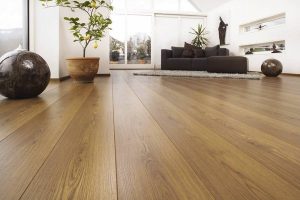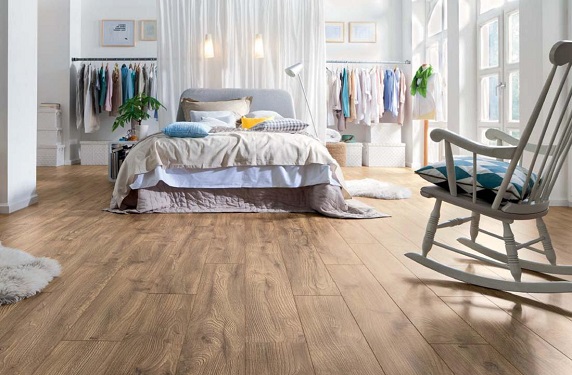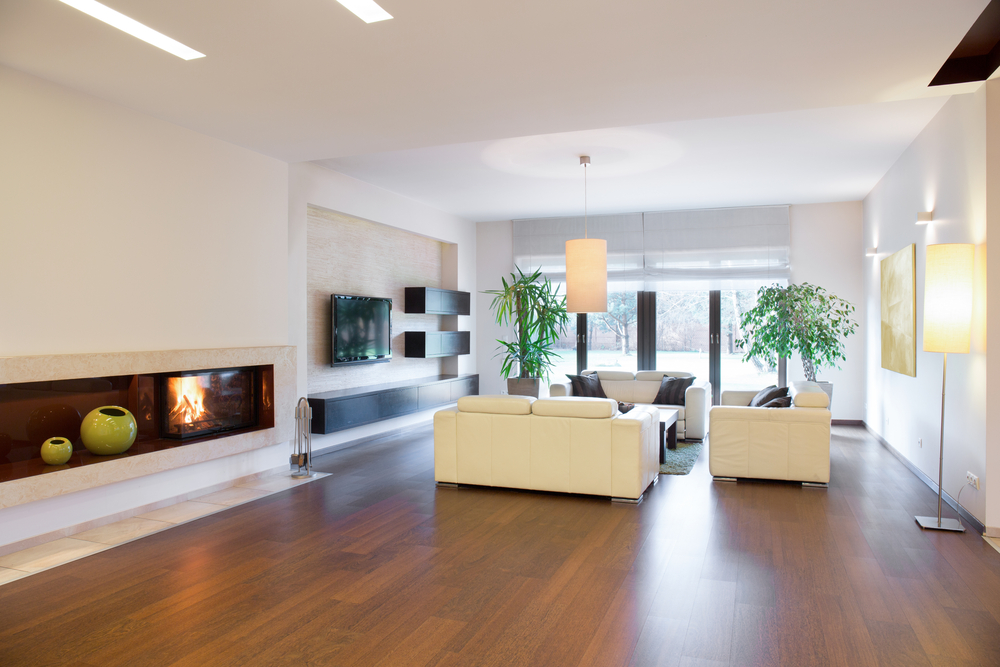What Is Floating Laminate Flooring?

Floating laminate flooring first appeared in the 80s and they are very popular today. This type of floor is similar to parquet flooring. The difference is that parquet is fixed to the subfloor. Floating laminate literally floats as it is not attached to the subfloor, hence the name. For that reason, it can go on top of other flooring.

Floating laminate is much cheaper than conventional parquet and installation is simpler. We will tell you the different types you can choose from and give you tips to extend the life of this flooring. You will also learn about the advantages and disadvantages to look for before choosing floating laminate flooring.
Types of floating laminate flooring
Floating laminate offers a multitude of possibilities since it is available in a wide range of styles and colors. Also, there are several different types of laminate on the market to choose from: natural solid, natural multi-layer, synthetic … How you will use it and how much you’re willing to spend are key factors in deciding which type to choose.

Advantages
- Floating laminate flooring offers many options in terms of finishes and colors. Whatever the style of the room, there is surely an option that fits it perfectly.
- It’s easy to clean. Simply sweep it or mop it. Also, it’s stain resistant and if stains do occur they can be easily removed.
- Easy installation. This type of flooring is installed by snapping one piece to another. It doesn’t take an expert to do it. With a little patience, anyone can install this flooring.
- Floating laminate flooring is mold and humidity resistant. It is also antibacterial.

Disadvantages
- You can’t varnish it so, it doesn’t have the extra layer of protection that hardwood flooring does. As time passes the flooring will wear relatively quickly.
- The most economical choices are of synthetic materials so their useful life may not be very long. You have to think about whether it’s more important to save money or have longer lasting flooring.
- It sounds hollow when you walk on it because it’s not resting on anything. Most people don’t care about this or even give it any thought. Some may be bothered by it in the beginning but they tend to get used to it as time goes on.

Tips to care for floating laminate flooring
Although the useful life of this flooring depends on the material used to make it, you can make it last longer if you take care of it. If you want your floating laminate to last longer, we recommend the following tips:
- Avoid forceful impact. A hard hit from a table leg or something heavy that falls on it can leave a mark that is impossible to repair.
- Keep it dry. This type of flooring does not go well with water. Avoid cleaning it with water. Also, place a doormat at the entrance of the house to avoid bringing in water onto the floor. Quickly clean up any spills or puddles to avoid damage.
- Sand it every five years or so if it is a high traffic area. If not, sanding every 10 years will suffice. When you sand it, you have to remember that it can’t be varnished. You will be sanding the very floor itself. That means you need to be aware of the thickness of the flooring so you don´t damage it.
Floating laminate flooring first appeared in the 80s and they are very popular today. This type of floor is similar to parquet flooring. The difference is that parquet is fixed to the subfloor. Floating laminate literally floats as it is not attached to the subfloor, hence the name. For that reason, it can go on top of other flooring.

Floating laminate is much cheaper than conventional parquet and installation is simpler. We will tell you the different types you can choose from and give you tips to extend the life of this flooring. You will also learn about the advantages and disadvantages to look for before choosing floating laminate flooring.
Types of floating laminate flooring
Floating laminate offers a multitude of possibilities since it is available in a wide range of styles and colors. Also, there are several different types of laminate on the market to choose from: natural solid, natural multi-layer, synthetic … How you will use it and how much you’re willing to spend are key factors in deciding which type to choose.

Advantages
- Floating laminate flooring offers many options in terms of finishes and colors. Whatever the style of the room, there is surely an option that fits it perfectly.
- It’s easy to clean. Simply sweep it or mop it. Also, it’s stain resistant and if stains do occur they can be easily removed.
- Easy installation. This type of flooring is installed by snapping one piece to another. It doesn’t take an expert to do it. With a little patience, anyone can install this flooring.
- Floating laminate flooring is mold and humidity resistant. It is also antibacterial.

Disadvantages
- You can’t varnish it so, it doesn’t have the extra layer of protection that hardwood flooring does. As time passes the flooring will wear relatively quickly.
- The most economical choices are of synthetic materials so their useful life may not be very long. You have to think about whether it’s more important to save money or have longer lasting flooring.
- It sounds hollow when you walk on it because it’s not resting on anything. Most people don’t care about this or even give it any thought. Some may be bothered by it in the beginning but they tend to get used to it as time goes on.

Tips to care for floating laminate flooring
Although the useful life of this flooring depends on the material used to make it, you can make it last longer if you take care of it. If you want your floating laminate to last longer, we recommend the following tips:
- Avoid forceful impact. A hard hit from a table leg or something heavy that falls on it can leave a mark that is impossible to repair.
- Keep it dry. This type of flooring does not go well with water. Avoid cleaning it with water. Also, place a doormat at the entrance of the house to avoid bringing in water onto the floor. Quickly clean up any spills or puddles to avoid damage.
- Sand it every five years or so if it is a high traffic area. If not, sanding every 10 years will suffice. When you sand it, you have to remember that it can’t be varnished. You will be sanding the very floor itself. That means you need to be aware of the thickness of the flooring so you don´t damage it.







